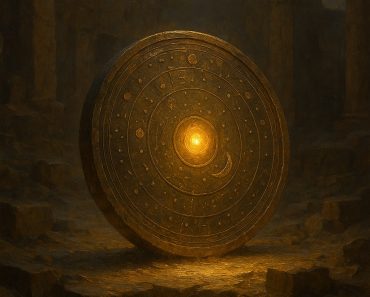Imagine stepping back over two millennia and witnessing a bustling hub of creativity where ancient artisans carved the raw beauty of marble into stunning statues. On the sun-soaked island of Paros, a groundbreaking discovery is reshaping our understanding of ancient Greek art
A Crown Jewel in the Heart of the Aegean: Discovering Paros’ Ancient Marble Workshop
The island of Paros, long celebrated for its magnificent Parian marble, has revealed an extraordinary archaeological treasure: a Hellenistic marble workshop packed with unfinished statues. Unearthed by the Greek Ministry of Culture, this site provides an unprecedented window into the art-making world of ancient Greece, where raw marble was transformed into timeless masterpieces.
Unlike many finds that center on finished artworks, this workshop opens a rare window into the artistic process itself. Located in Parikia, the capital of Paros, the site was active toward the end of the 3rd century BCE and is filled with sculptural fragments, clay molds, and tools. These remnants profoundly deepen our understanding of how masterpieces such as the Venus de Milo may have originated, not just in skill but in collaborative labor and iterative craftsmanship.
Why Parian Marble Was a Game Changer for Ancient Greek Sculptors
Paros became iconic in antiquity largely because of its marble, prized for an ethereal white color, semi-translucent quality, and an incredibly fine grain that allowed for extraordinary detail. This marble was the material of choice for monumental temples and statues that symbolize classical Greek art’s elegance and sophistication.
Professor Elena Voutsaki, an expert in Greek archaeology, remarked that “Parian marble gave sculptors the ability to achieve lifelike textures and intricate designs impossible with other stones. This workshop reveals that Paros was not just a quarry, but a creative nucleus.”
Indeed, experts believe that the island’s influence extended far beyond simple quarrying, serving as a primary production center for sculptures, with raw material and artistic expertise working hand in hand to shape the cultural landscape of the era.
Unfinished Statues Reveal the Secrets of Ancient Artistic Techniques
Among the most mesmerizing finds are numerous unfinished statues, particularly of Aphrodite, the goddess embodying love and beauty. These statues are not polished works but raw, evolving pieces that reveal the step-by-step creation from clay models to marble chisel work. Archaeologists also discovered clay heads and molds, suggesting a multi-stage approach integrating preliminary shaping before refining in marble.
Evidence such as the dusty marble fragments scattered across the workshop points to an active, vigorous sculpting process sustained over a long period. These traces expose the unseen labor behind the famed polished statues, allowing historians to reconstruct ancient artistic methods with remarkable fidelity.
According to a 2023 report by the Archaeological Institute of America, findings like these help fill a critical gap in knowledge about mass production of art in the ancient world, challenging the popular notion of all statues being unique masterpieces crafted individually by lone artists.
Art and Everyday Life: The Rich Cultural Fabric of Ancient Paros Unveiled
The excavation revealed more than just artistic implements. A nearby room with a pebbled floor and a vibrant mural suggests it was an andron, a social space where residents gathered for discussions, feasts, or cultural events. This integration of domestic and creative spaces underscores how deeply intertwined art was with everyday life in ancient Paros.
The mural, a rare find, provides a visual glimpse into the islanders’ aesthetic values and social dynamics, broadening our appreciation for the cultural milieu that inspired such art. These insights highlight that artistic production was not simply a craft but a cornerstone of community identity and daily existence.
As Dr. Maria Spyropoulos, lead archaeologist at the site, eloquently explains: “The fusion of workshop and social space here offers a vivid picture of a living community where creativity and culture flourished hand in hand.”
Discoveries like the Paros marble workshop enrich the story of Greek sculpture by illuminating the full arc of artistic creation—from raw stone to social tradition. They remind us that the beauty of ancient art was not only in its final form but also in the hands and lives of those who crafted it.
What do you think about this incredible find from Paros? Did it change your perspective on how ancient art was made? Share your thoughts below, or pass this story along to art lovers and history buffs alike!







